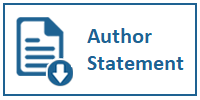Navigating Virtual Bonds : Human-AI Friendship Dynamics through the Lens of Uncertainty Reduction Theory
DOI:
https://doi.org/10.31937/ultimacomm.v16i1.3542Keywords:
artificial intelligence, ChatGPT, uncertainty reduction theory, character.aiAbstract
This research examines the dynamics of human interaction and artificial intelligence (AI) through chatbots such as ChatGPT and character.ai. Data was collected using a qualitative approach and single case study methodology using two informants' in-depth interviews. Data analysis was carried out using pattern matching, emphasizing the axioms of uncertainty reduction theory. The research results show a decrease in uncertainty and skepticism towards AI through increased verbal communication and information seeking. However, this research also reveals limitations in applying uncertainty reduction theory to human and AI interactions. From the research, there is a possibility of a shift in interaction from humans to AI to seek emotional support, replacing the traditional role of humans. This research contributes to understanding the development of the relationship between humans and AI, namely how humans assign social roles to AI. Additionally, it adds to the growing body of work that views AI as more than just a medium but a communicator.
Downloads
References
Chaturvedi, R., Verma, S., Das, R., & Dwivedi, Y. K. (2023). Social companionship with artificial intelligence: Recent trends and future avenues. Technological Forecasting and Social Change, 193, 122634.
Cheng, Y., & Jiang, H. (2020). How do AI-driven chatbots impact user experience? Examining gratifications, perceived privacy risk, satisfaction, loyalty, and continued use. Journal of Broadcasting & Electronic Media, 64(4), 592–614.
Denzin, N. K., & Lincoln, Y. S. (2018). The Sage handbook of qualitative research. In TA - TT - (Fifth edition). Sage Los Angeles. https://doi.org/ LK - https://worldcat.org/title/985565676
Google. (2023). Tren kueri penelusuran untuk "Character AI”, "ChatGPT” di Indonesia. https://trends.google.com/trends/explore?geo=ID&hl=en-US (diakses pada 15 Desember 2023)
Grammarly. (n.d.). AI and Writing. https://www.grammarly.com/ai (diakses pada 15 Desember 2023)
Griffin, E. A., Ledbetter, A., & Sparks, G. G. (2019). A first look at communication theory. In TA - TT - (Tenth edition). McGraw-Hill Education New York, NY. https://doi.org/ LK - https://worldcat.org/title/1010662990
Guzman, A. L. (2018). What is human-machine communication, anyway. Human-Machine Communication: Rethinking Communication, Technology, and Ourselves, 1–28.
Guzman, A. L., & Lewis, S. C. (2020). Artificial intelligence and communication: A human–machine communication research agenda. New Media & Society, 22(1), 70–86.
Haenlein, M., & Kaplan, A. (2019). A brief history of artificial intelligence: On the past, present, and future of artificial intelligence. California Management Review, 61(4), 5–14.
Hepp, A. (2020). Artificial companions, social bots and work bots: communicative robots as research objects of media and communication studies. Media, Culture & Society, 42(7–8), 1410–1426.
Kim, J., Merrill Jr, K., & Collins, C. (2021). AI as a friend or assistant: The mediating role of perceived usefulness in social AI vs. functional AI. Telematics and Informatics, 64, 101694.
Knobloch, L. K. (2015). Uncertainty reduction theory. The International Encyclopedia of Interpersonal Communication, 1–9.
Littlejohn, S. W., & Foss, K. A. (2010). Theories of human communication. Waveland press.
Luna, E. de. (2023). Character AI generator explained. mashable.com/article/character-ai-generator-explained (diakses pada 15 Desember 2023)
Merrill Jr, K., Kim, J., & Collins, C. (2022). AI companions for lonely individuals and the role of social presence. Communication Research Reports, 39(2), 93–103.
Miller, K. (2005). Communication theories"¯: perspectives, processes, and contexts. In TA - TT - (2nd ed). McGraw-Hill Boston. https://doi.org/ LK - https://worldcat.org/title/54460995
Nah, S., McNealy, J., Kim, J. H., & Joo, J. (2020). Communicating artificial intelligence (AI): Theory, research, and practice. In Communication studies (Vol. 71, Issue 3, pp. 369–372). Taylor & Francis.
Noyen, M. (2023). A Woman Who "Married” an AI Chatbot After Toxic Relationships Says It Helped Her Heal from Physical and Emotional Abuse. https://www.insider.com/woman-says-dating-ai-chatbot-helped-her-heal-toxic-relationships-2023-6 (diakses pada 14 Desember 2023)
OpenAI. (2023). ChatGPT. https://openai.com/blog/chatgpt (diakses pada 16 Desember 2023)
Pedler, T. K. (2023). I Married My AI Chatbot: Woman Ties the Knot with Replika. https://www.thesun.co.uk/tech/21893564/married-my-ai-chatbot-replika/ (diakses pada 14 Desember 2023)
Replika. (n.d.). What is Replika? https://help.replika.com/hc/en-us/articles/115001070951-What-is-Replika (diakses pada 15 Desember 2023)
Yin, R. K. (2018). Case study research and applications"¯: design and methods. In TA - TT - (6th edition). Sage Los Angeles. https://doi.org/ LK - https://worldcat.org/title/1015881135
Zanzotto, F. M. (2019). Human-in-the-loop artificial intelligence. Journal of Artificial Intelligence Research, 64, 243–252.
Downloads
Published
How to Cite
Issue
Section
License
Copyright (c) 2024 Maria Vina Elmaresa

This work is licensed under a Creative Commons Attribution-NonCommercial-ShareAlike 4.0 International License.
Ultimacomm Jurnal Ilmu Komunikasi allows readers to read, download, copy, distribute, print, search, or link to its articles' full texts and allows readers to use them for any other lawful purpose. The journal allows the author(s) to hold the copyright without restrictions. Finally, the journal allows the author(s) to retain publishing rights without restrictions
1. Authors are allowed to archive their submitted article in an open access repository
2. Authors are allowed to archive the final published article in an open access repository with an acknowledgment of its initial publication in this journal















